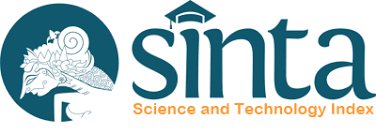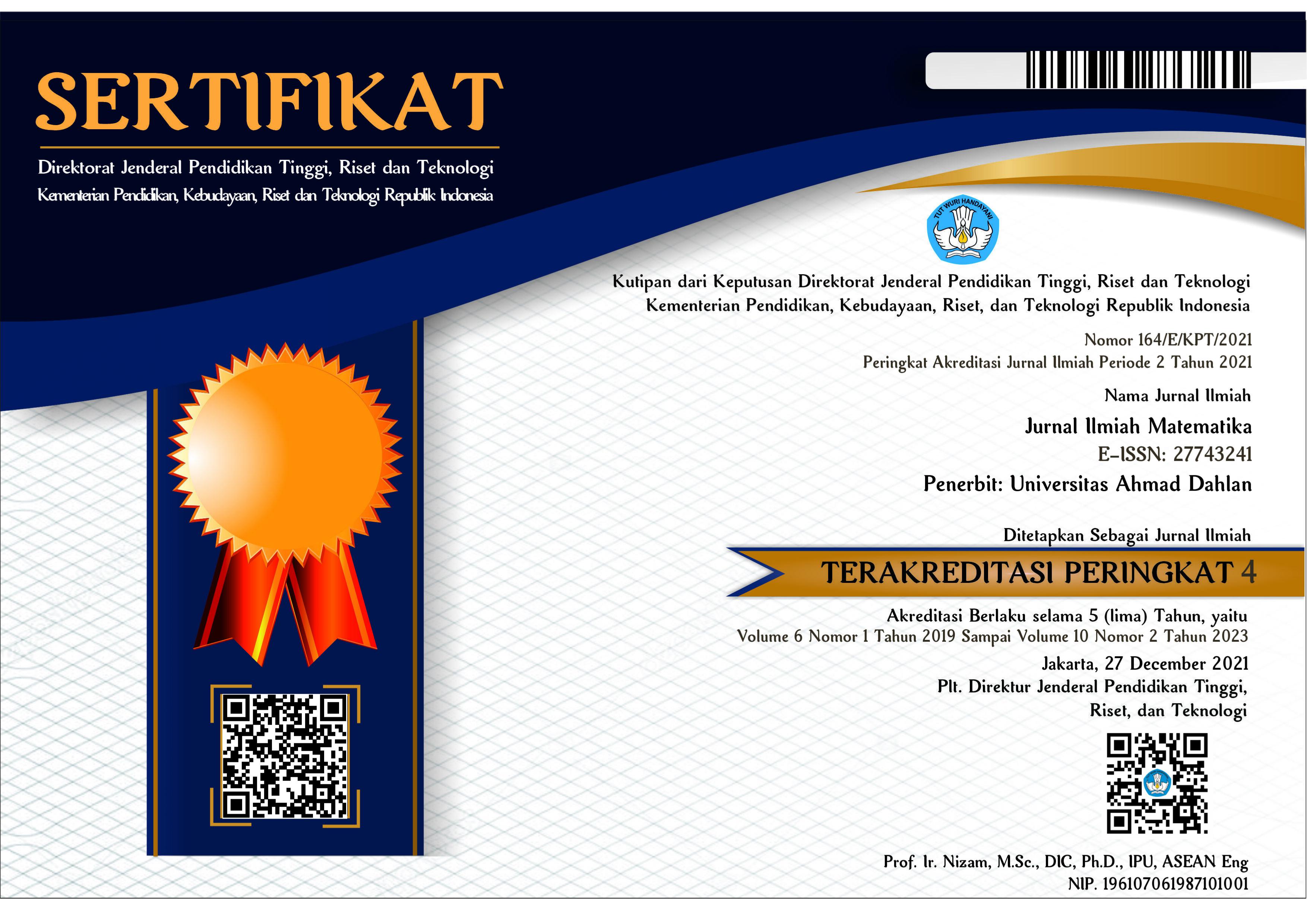Analysis of diabetes mellitus gene expression data using two-phase biclustering method
DOI:
https://doi.org/10.26555/konvergensi.v0i0.22111Keywords:
Clustering, Singular Value Decomposition, K-Means, SilhouetteAbstract
The purpose of this research is to find bicluster from Type 2 Diabetes Mellitus genes expression data which samples are obese and lean people using two-phase biclustering. The first step is to use Singular Value Decomposition to decompose matrix gene expression data into gene and condition based matrices. The second step is to use K-means to cluster gene and condition based matrices, forming several clusters from each matrix. Furthermore, the silhouette method is applied to determine the number of optimum clusters and measure the accuracy of grouping results. Based on the experimental results, Type 2 Diabetes Mellitus dataset with 668 selected genes produced optimal biclusters, with six biclusters. The obtained biclusters consist of 2 clusters on the gene-based matrix and 3 clusters on the sample-based matrix with silhouette values, respectively, are 0.7361615 and 0.7050163.References
R. D. Cahyaningrum, A. Bustamam, and T. Siswantining, “Implementation of spectral clustering with partitioning around medoids (PAM) algorithm on microarray data of carcinoma,†2017, p. 020007, doi: 10.1063/1.4978976.
Frisca, A. Bustamam, and T. Siswantining, “Implementation of spectral clustering on microarray data of carcinoma using k-means algorithm,†2017, p. 020008, doi: 10.1063/1.4978977.
G. Ardaneswari, A. Bustamam, and D. Sarwinda, “Implementation of plaid model biclustering method on microarray of carcinoma and adenoma tumor gene expression data,†J. Phys. Conf. Ser., vol. 893, p. 012046, Oct. 2017, doi: 10.1088/1742-6596/893/1/012046.
A. Bustamam, S. Formalidin, and T. Siswantining, “Clustering and analyzing microarray data of lymphoma using singular value decomposition (SVD) and hybrid clustering,†2018, p. 020220, doi: 10.1063/1.5064217.
W.-H. Yang, D.-Q. Dai, and H. Yan, “Finding Correlated Biclusters from Gene Expression Data,†IEEE Trans. Knowl. Data Eng., vol. 23, no. 4, pp. 568–584, Apr. 2011, doi: 10.1109/TKDE.2010.150.
I. Jolliffe, “Principal Component Analysis,†in Encyclopedia of Statistics in Behavioral Science, Chichester, UK: John Wiley & Sons, Ltd, 2005.
O. Alter and G. H. Golub, “Singular value decomposition of genome-scale mRNA lengths distribution reveals asymmetry in RNA gel electrophoresis band broadening,†Proc. Natl. Acad. Sci., vol. 103, no. 32, pp. 11828–11833, Aug. 2006, doi: 10.1073/pnas.0604756103.
I. Bin Mohamad and D. Usman, “Standardization and Its Effects on K-Means Clustering Algorithm,†Res. J. Appl. Sci. Eng. Technol., vol. 6, no. 17, pp. 3299–3303, Sep. 2013, doi: 10.19026/rjaset.6.3638.
L. Kaufman and P. J. Rousseeuw, An introduction to cluster analysis. John Wiley and Sons, Incorporated, 1990.
G. S. Maddala, “Introduction to Econometrics,†Introd. to Econom. (2nd ed.). New York MacMillan, pp. 88–96, 1992.
A. Bustamam, S. D. Puspa, and T. Siswantining, “Implementation of co-similarity measure on microarray data of lymphoma using K-means partition algorithm,†2018, p. 020222, doi: 10.1063/1.5064219.
S. Dudoit, J. Fridlyand, and T. P. Speed, “Comparison of Discrimination Methods for the Classification of Tumors Using Gene Expression Data,†J. Am. Stat. Assoc., vol. 97, no. 457, pp. 77–87, Mar. 2002, doi: 10.1198/016214502753479248.
T. R. Golub et al., “Molecular Classification of Cancer: Class Discovery and Class Prediction by Gene Expression Monitoring,†Science (80-. )., vol. 286, no. 5439, pp. 531–537, Oct. 1999, doi: 10.1126/science.286.5439.531.
NCBI, “Diabetes Melitus Data: Obese patients with and without type 2 diabetes: liver,†2009. https://www.ncbi.nlm.nih.gov/sites/GDSbrowser accessed on March 2020.
Y. Shao, H. Shao, M. S. Sawhney, and L. Shi, “Serum uric acid as a risk factor of all-cause mortality and cardiovascular events among type 2 diabetes population: Meta-analysis of correlational evidence,†J. Diabetes Complications, vol. 33, no. 10, p. 107409, 2019, doi: https://doi.org/10.1016/j.jdiacomp.2019.07.006.
Downloads
Published
Issue
Section
License
Authors who publish with this journal agree to the following terms:
1. Authors retain copyright and grant the journal right of first publication with the work simultaneously licensed under a Creative Commons Attribution License that allows others to share the work with an acknowledgment of the work's authorship and initial publication in this journal.
2. Authors are able to enter into separate, additional contractual arrangements for the non-exclusive distribution of the journal's published version of the work (e.g., post it to an institutional repository or publish it in a book), with an acknowledgment of its initial publication in this journal.
3. Authors are permitted and encouraged to post their work online (e.g., in institutional repositories or on their website) prior to and during the submission process, as it can lead to productive exchanges, as well as earlier and greater citation of published work.

This work is licensed under a Creative Commons Attribution-ShareAlike 2.0 Generic License.









